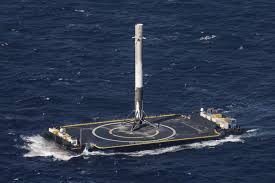
Breaking News
 $26M Frozen on Blockchain - With One Click
$26M Frozen on Blockchain - With One Click
 Italy are on national strike shutdown rejecting digital enslavement...
Italy are on national strike shutdown rejecting digital enslavement...
 The following U.S. states are currently using the rebranded "Reporty Homeland Security" so
The following U.S. states are currently using the rebranded "Reporty Homeland Security" so
 NATO Chief Urges Europe To Prepare For Long-Term World War With Russia, China, Iran & North Korea
NATO Chief Urges Europe To Prepare For Long-Term World War With Russia, China, Iran & North Korea
Top Tech News
 HUGE 32kWh LiFePO4 DIY Battery w/ 628Ah Cells! 90 Minute Build
HUGE 32kWh LiFePO4 DIY Battery w/ 628Ah Cells! 90 Minute Build
 What Has Bitcoin Become 17 Years After Satoshi Nakamoto Published The Whitepaper?
What Has Bitcoin Become 17 Years After Satoshi Nakamoto Published The Whitepaper?
 Japan just injected artificial blood into a human. No blood type needed. No refrigeration.
Japan just injected artificial blood into a human. No blood type needed. No refrigeration.
 The 6 Best LLM Tools To Run Models Locally
The 6 Best LLM Tools To Run Models Locally
 Testing My First Sodium-Ion Solar Battery
Testing My First Sodium-Ion Solar Battery
 A man once paralyzed from the waist down now stands on his own, not with machines or wires,...
A man once paralyzed from the waist down now stands on his own, not with machines or wires,...
 Review: Thumb-sized thermal camera turns your phone into a smart tool
Review: Thumb-sized thermal camera turns your phone into a smart tool
 Army To Bring Nuclear Microreactors To Its Bases By 2028
Army To Bring Nuclear Microreactors To Its Bases By 2028
 Nissan Says It's On Track For Solid-State Batteries That Double EV Range By 2028
Nissan Says It's On Track For Solid-State Batteries That Double EV Range By 2028
What Happens After You Land A Rocket On A Drone Ship?

SpaceX
They did it! What's next?
SpaceX finally did it—they landed a rocket on a drone ship in the ocean. The achievement will make it easier for the company to refurbish and re-fly used rockets, potentially cutting launch costs dramatically. The success was a long time coming, and the company had to suffer through several fiery failures before they could pull it off.
"We're a little bit like the dog that caught the bus," Musk joked during a press conference yesterday. "'What do we do now?'"
Thankfully, the next part isn't nearly as complicated as rocket science. The rocket remains on the autonomous barge for now, and Musk said the first step would be to make sure it wouldn't tip over, especially with the threat of strong winds coming in. Once the rocket was safe to approach, the crew would board the ship and weld it to the deck using "steel shoes that we put over the landing feet."
On Sunday, they'll sail the ship and rocket into port. A fixture will attach to the top of rocket booster so that a crane can pick it up and put it down on land. It'll set it down onto a stand that'll allow the rocket to fold up its landing legs. Then the crane can tip the booster over horizontally for transport.

 Carbon based computers that run on iron
Carbon based computers that run on iron


